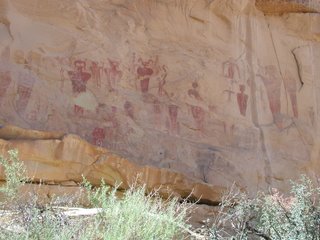
Once in a while, you get the chance to go to a place that no
one else seems to know about. Sego Canyon Rock-Art Site
is one such place. Only about an hour west of Grand Junction,
near the town of Thompson, Utah this should be much busier
than it is. I had the entire canyon...thousands of acres, all to
myself for the three hours I was there. In fact, only a dozen or
so people had been there all month, according to the register.
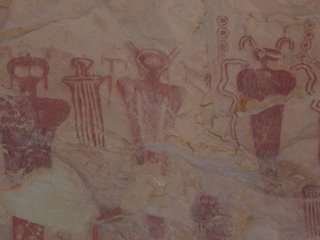
Sego Canyon has three separate styles of rock art from three
cultures, spanning thousands of years. The oldest is the
Barrier Canyon Culture. These paintings were made over
6000 years ago and are one of those most amazing things
I've ever seen. To think that these "beings" have been here
for so long is pretty staggering.
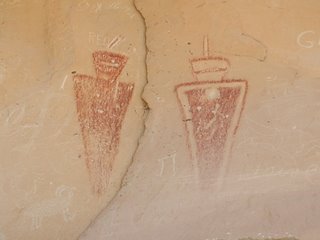
The ancient hunters that made these paintings didn't live
in the area, but were nomads on hunting trips, drawn to the
area by water and lots of game. The have kind of a otherworldly
appearance that most experts believe represent either the gods
they worshipped or shamans of the tribes that painted them

The next section was made by the Fremont people. The Fremont
were contemporaries of the Anasazi (Ancient Puebloans) and
their culture occupied large parts of Utah, Western Colorado and
Southwest Wyoming. These petroglyphs were "pecked" into the
rock instead of using pigments and represent hunting scenes,
including quite a few bighorn sheep.
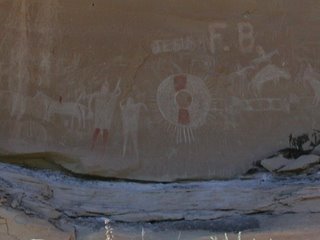
The last section was made by the Utes (Notah) people who began
hunting in the area about 500 years ago. They were nomadic like
the Barrier Culture people, but they had the horse. Introduced by
the Spanish in the 16th century, it became a large part of the Ute
culture and is represented on the artwork at Sego. The Utes also
used bows and arrows and worshiped the White Buffalo, which is
also on the rock walls here.

About 3 miles norh of the Rock-Art Site lies the ghost town of Sego.
Unlike most mining towns in the west, this town was based on coal
mining and was lastl occupied in 1947. There was a general store,
a boarding house and a few miner's quarters, some of which are still
visible.
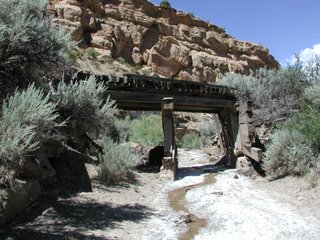
The trouble with mining ghost towns and abandoned mines in
general, is that the tailings exist long after the mines are closed and
the people have disappeared. Sego is no different. There are coal
tailings all over the place. However, it looks like nature is gradually
reclaiming the area and in several hundred years it will probably look
like nothing was ever here.
If people behave themselves and don't damage the rock-art, it will
hopefully be here for many years to come.
2 comments:
It looks like another type of painting on the walls is graffiti :(
Yeah, there is other graffiti there, but surprisingly, little of it is recent. The newest I saw was dated 1967 and the oldest was dated 1886!
Post a Comment